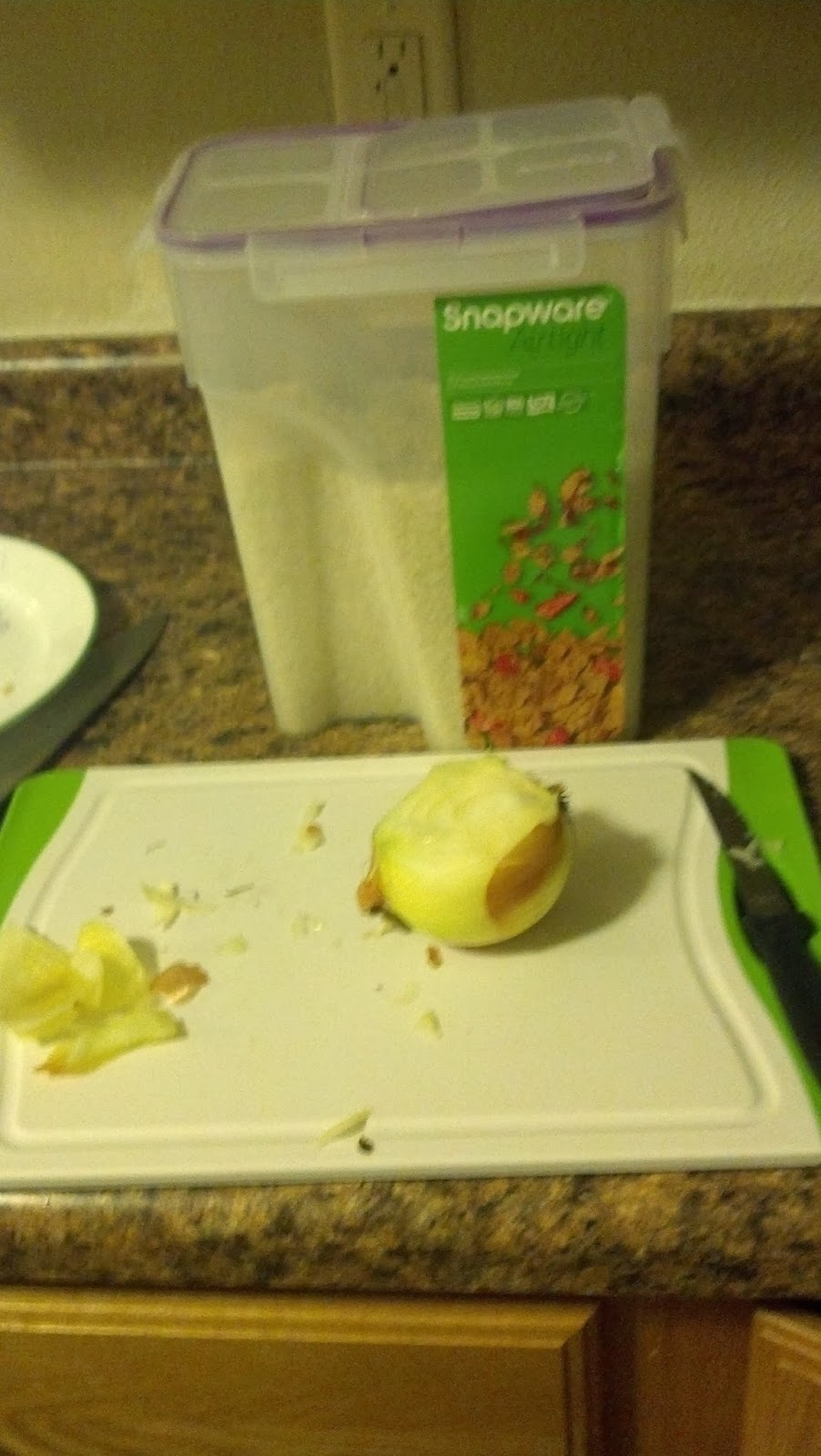According to our textbook, "The Science of Good Cooking," the conventional way to make rice is to have two cups of water for every cup of rice. The book suggests doing three cups of water for every two cups of rice instead. They state that it makes it much more fluffy and full.
 |
| Didn't even cry |
My experiment consisted of trying out the two ways of rice cooking with the recipe for rice pilaf in the book. Long grain rice was used for the experiment because it gets the most fluffy and full. All rice has a starch that helps it cook a certain way, and the starch with a high percentage of amylose starch, like long grain rice, causes it to rise more than other types of rice. I also tested the absorption rate of the rice with the amount of water used. Rice that is too watery at the end is obviously not as tasty as rice with no water left.
My hypothesis was that the rice with the 3 cups of water for 2 cups of rice would have more volume and absorb the water faster than the rice with 2 cups of water for 1 cup of rice. The absorption rate is based on the water in it, nothing more. The fluffy factor is based on the fact that the book says it works of course! And that the rice was rinsed beforehand, so water was already absorbed. Too much water will effect the absorption and fluffiness of the rice.
The recipe I used:
-2 Cups of long grain rice
-3 tablespoons of unsalted butter
-1 small onion chopped
-3 cups of water (4 cups for batch 2)
-Salt
I cooked the onions then added the rice. I then added water, brought it to a boil, covered it up, then moved the setting to low and let it simmer until all of the water was absorbed.
 |
| Batch 1: The Best One |
My independent variable was the amount of water I put into the rice recipe
The dependent variable is the absorption rate and the volume of the rice
My standardized variables were the sauce pan, measuring cup, and every ingredient except the amount of water.
 |
| Batch 2: To Be Eaten Tomorrow |
What did I learn from this? Well, the rice that had less water in it did get fluffier and absorbed all of the water faster than the batch with more water in it. I used the measuring cup to measure the volume, and the batch with three cups of water measured 4.5 cups. The batch with 4 cups of water measured 3.75 cups. The absorption rate for the batch with less water was 15 minutes, while the absorption rate for the batch with more water was 18 minutes.
If I were to do this experiment again, I would use more samples. Anything could have happened to skew the results from some water evaporating before I put the lid on to some rice falling out of the strainer when rinsing it. I would want to see if the results were consistent with what I found, or if mine is an odd finding. I would also probably skip the onions and do straight rice because the onions could have affected the absorption rate as well.
 |
| Selfie as I waited for the rice to absorb |
Sources: The Science of Good Cooking by Guy Crosby

























